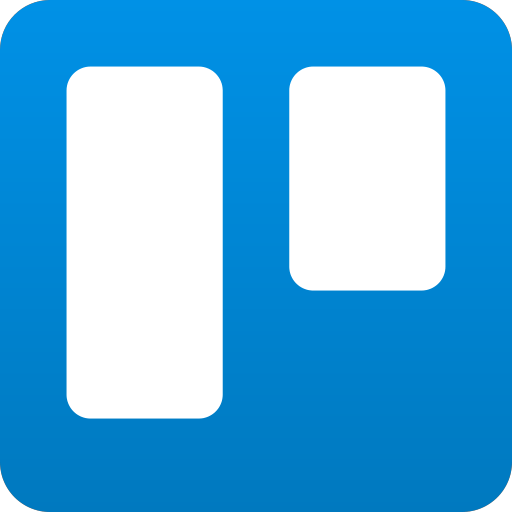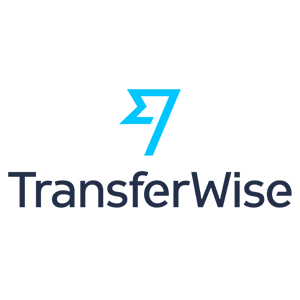How Dani Mancini Transformed Her Freelance Gigs Into A SaaS Business
Hello! Who are you and what business did you start?
Hi! My name's Dani, founder of Scribly - you can’t see me but I’m waving at you 👋
TL;DR; after a few months of freelancing, I decided to launch a productized copywriting service: Scribly.io.
We deliver subscription-based copywriting to help businesses scale, at roughly 50% of the cost of hiring in-house.
I like to think of Scribly as a growth tool, rather than a service. Or perhaps a better way of saying it is that we’re a tool that just happens to offer a service.
Our core priority is to support companies (usually small ones) with the quick, iterative, fast-paced copy they need to run growth experiments. For example, just like you'd rely on a tool like Unbounce to technically support a landing page, we think of Scribly as a tool to support production.
Startups and small businesses need copy - quickly and reliably - to run iterative and fast-paced growth experiments. They don't have the time to source and manage freelancers, nor the finances to hire them in-house.
That's where we come in.
We take all the time and stress out of hiring amazing writers and editing their outputs. Ultimately this frees teams up to focus on developing amazing products, and makes sure that the copy for every growth experiment is optimised for success.
All of our writers are native English speakers, and we do everything from blog posts, to ad, social media and landing page copy. So whether you want to get your content machine off the ground or launch a new service, we pitch in and help you nail it.
Last month Scribly.io topped $14K monthly revenue. That was a really big moment for me, and a bit of a turning point. What started out as a 'let's try and see' project has now become my full-time job with ambitious growth plans 🙌.

What's your backstory and how did you come up with the idea?
Ok, this has the potential to be a long one, so maybe grab a cuppa or a coffee ☕.
I'm a first-time entrepreneur with a fairly eclectic background.
I studied French and Russian at uni (Oui, Я немного говорю по русски!) and began my career in policy design for the UK government. After 2 years of trying to fit in and failing terribly, I decided to jump ship and retrain as a UX designer.
I was terrified, but also fired up. I had zero experience of anything to do with being self-employed, I had literally never sent a manual invoice the day that I quit my job. I don't even think I had a business bank account by that point.
Of all the scary career decisions I've made, this was by far the hardest. I was - on paper - on course for a prestigious career on an elite graduate programme. But I felt so boxed in, like I couldn't breathe.
Over the course of the next 4-ish years, I found myself flitting from job to job, never really feeling settled. I'd made this big jump, and yet I always seemed to come back to the same feeling of restlessness.
That's when I started to find myself gravitating towards the thing I really love to do: write.
I began picking up odd freelance copywriting jobs here and there that I would do in my spare time. As time went by, I found myself rushing home from my "real" job so that I could get on with the fun stuff: my copy gigs.
One Saturday night as I found myself working happily into the early hours on a freelance project, I realized that I wanted to make this my permanent thing.
And so I did.
With just a few hundred dollars worth of projects lined up, I quit my job in April 2018 and took a giant leap into the unknown.
I was terrified, but also fired up. I had zero experience of anything to do with being self-employed, I had literally never sent a manual invoice the day that I quit my job. I don't even think I had a business bank account by that point.
So I surrounded myself with people who did know things, and got to work.

What motivated me to do this?
I've worked both as a freelance copywriter and someone who hires them, and felt increasingly frustrated at
- how exploitative the market is for freelance writers (they basically have to sell their souls to work for free), and
- how hard it is to find great writers on an on-demand basis.
There have been a couple of productised copywriting service launches, but many of them are priced at a point that troubles me.
A wise person once said, "if it seems too good to be true, it is".
It's really not possible, no matter how hard you try, to offer high quality unlimited copywriting for <$300/m, whilst also paying your writers a rate they deserve.
One or the other suffers: quality, or integrity.
Neither of which feels like a nice compromise.
After getting caught in analysis paralysis about how to create something different in that space, in the end, I just set myself a 3-day limit to hack together a website, and launch something, anything, and then iterate from there.
And so, 3 days later, I launched Scribly.io 🚀
I floated the idea and shared the website with my freelance clients at the time - a lot of whom were startups - and got tons of interest.
Based on this early validation, a service that could plug that gap seemed in demand.
That's when I decided to give it a go for reals.
The importance of going all-in
There is nothing quite like the crippling fear of not knowing where your next salary is coming from. It’s like motivational rocket-fuel.
Once I took away the security blanket of having secure income, I had no choice but to try and make it work. I think that, without that uncertainty, I would have just coasted.
Of course I’m not suggesting that everyone should quit their job to focus on a side-gig, but if you’re serious about making it work, then I think one of the biggest boosts is actually having the confidence to go all-in for it.
You not only free up your time and energy to focus, but it’s also a big vote of confidence to yourself that - on some level at least - you think it can work.
Take us through the process of building the product.
I’m a solo-founder, so building, running and growing Scribly.io has been all on me.
I think a big learning for me is to accept that there’s only so much I can do. I’m not the most patient person in the world, and learning to be ok with a slower pace than I might like has been a challenge for sure.
There’s obviously only so much that any one human can do, so from the moment I started developing Scribly.io I was determined to have a ‘f*ck it, ship it’ mindset. I wanted to test everything really quickly so that I could iterate along the way, and only do what I could afford with the cash flow I had available.
How long it took to get Scribly.io off the ground
As I mentioned before, I gave myself 3 days to get the initial website up and running so that I could validate the idea. This was enough to confirm that this was worth pursuing.

I used Webflow to get a site off the ground within a day, and then launched with a fairly bare-bones product.
I didn’t really know what the pricing model would be or anything at that point, but I decided to just put in front of some of my freelance customers, get feedback, and take it from there.
At this stage, I was really unsure of how to price the model. There are a couple of really cheap unlimited copy services out there, but I knew I was going to have to price myself higher to be able to offer the quality that I wanted to. I decided to experiment with a low intro rate of $699, but this very quickly transpired to not be a viable long term price. The margins were just so low for high-volume customers. So soon after I decided to up the price to $2000 and to really place a strong value in communication with potential customers that with Scribly, you’re getting high quality, professional writing from the best.
This was a tough call for me: it took more confidence in the product than I think I even had myself to raise the price, but it’s been so worthwhile. Since then I can really focus on providing the best possible experience for each and every client, which has helped enormously with retention.
Funding Scribly.io
Because it’s a service, funding Scribly.io has perhaps been simpler than for a digital product. I have a weekly payment policy with my writers, and receive payments from clients monthly. So the biggest financial consideration is making sure that I have enough cash flow to pay for all my writers before getting paid for the work itself.
I have only ever re-invested money earned back into the company. I started with the money I’d built up as a freelancer, and now I just work with the cash flow built up through the subscription model.
This means that I’m limited in terms of how quickly I can grow the number of writers I have, but it works for me. As I mentioned before, it’s really important to me that all of Scribly’s writers are paid fairly and on-time (I’ve been on the receiving end of when that’s not the case, and it’s so not fun), so it’s also become a matter of company integrity to scale growth in this way.
A friend who has built and sold businesses told me that the most important mental shift to make was to stop thinking about myself as a freelancer, and to get a team that I trusted in place to delegate to. So off the bat, I decided to recruit a few copywriting freelancers (it was just 3 writers at the beginning) who’d I met through my career and to really pour time and energy into getting them up to speed with the quality I wanted each and every client to get.
Making this mental shift from thinking of myself as ‘the do-er’ was much harder than I expected. I naturally wanted to just jump in on tasks (especially cause I love to write!), but I realized that letting go and learning to trust others was a really important step. I then focused purely on editing, account management and business development, which was a full-time job in itself.
This was an ideal time to test out the operational processes of running Scribly. I started off trying to have a fancy project management set up with Airtable, but it proved to be more complicated than it needed to be, so I scaled everything right back and moved to Trello. In these early days I definitely had a tendency to want to over-tool, but as I tested things out, I realised that having the simplest possible system was the only way to keep things running smoothly. It’s simply too much of an ask to get new writers and clients onboarded to new fancy tools.
Since launch, what has worked to attract and retain customers?
I would say that Scribly.io fits into two distinct phases:
1) The Word of Mouth Phase
2) The Digital Growth Phase
The Word of Mouth Phase
I was lucky in that I was already working as a freelancer and had a really healthy client base. These were the first people that I reached out to.
I contacted each of my existing clients with an early-bird offer. In hindsight, I could have done it so much better. I didn’t have a landing page or anything to track visits or clicks. I simply sent a personal email with a discounted early-bird price of $999 for the first month.
Despite that, within the first 2 months, I’d converted 7 of my freelance clients over to the Scribly.io model, which was a good start. The issue was (and still is), that each client wanted something bespoke, so what I’d hoped would be a simple billing model actually ended up just being more like custom retainers for each business converted.
All of the clients converted during this phase knew me and my work. I already had a great relationship with them, and so the challenge was just to convince them that nothing would change in terms of quality when I handed over writing responsibility to other writers. I simply ran a trial task for free to prove this to clients, and then the rest was smooth sailing from there.
Since that initial launch, things grew through manual outreach and word of mouth. Happy customers have put us in touch with other people they know, and things snowballed from there.
I have now set up a rewards-based referral scheme, which offers existing clients $50 credit for every referral that becomes a paid project, but actually, in the early months, most clients were just happy to do this for free.
Because of this, great client experience and customer retention is a core focus of the business. I would rather say no to new business if I have any doubt that it will negatively impact the experience of my current clients.
The Digital Growth Phase
Since those early days, I’m now focused on a proper growth plan that consists of the following:
Content Marketing/SEO
I feel very strongly that, as a content company, I need to have a sh**t hot content section of the side. Organic traffic is definitely where I want to focus my marketing investment, so I’m in the process of building out the blog section of the Scribly site into a Knowledge Hub, offering copywriting and content marketing lessons.
I’ve just started publishing twice weekly, and have now decided to use LinkedIn and Twitter as my primary distribution channel for the time being. I’m in the process of getting a full SEO analysis done to get my opportunity areas nailed.
Right now we rank 3rd for “unlimited copywriting”, but it’s not a high volume search. As with all things SEO, it’s a slow process and I only started a few weeks ago. Traffic to the blog is picking up steadily, it grew by 11.9% last month. Hopefully, I’ll start to see some meaningful gains over the coming months.
Intro offer popup
I added a widget that offers new visitors $100 off their first project (I used a tool called Magnify). This has been really successful so far. I went from getting 1 new direct lead a week to 6 in the first day.
Listing on startup directories
I spent an afternoon adding Scribly to all of the startup directories I could find. By far the most worthwhile has been listing on Get Worm. Within literally 10 minutes of my listing going live, I received 5 leads!
The list of directories I put Scribly on are:
- https://toolsformakers.com
- https://startupstash.com/
- https://foundersbelt.com/
- https://betabound.com
- https://www.startupbutton.com
- https://www.Getworm.com
- https://www.Startuptracker.io
Partnerships, Referrals & Targeted landing pages
I wanted to run some special intro offers for various customer segments, so I created targeted landing pages for each segment and then adjusted the copy to be hyper-specific to that niche.
For example, I have a startup landing page, an agency landing page, and a more generic referrals landing page for contacts of my existing clients. My biggest failure here is relying on Webflow for my landing pages, which makes it impossible to A/B test. I’ll be moving to a tool like Unbounce soon to improve on this process.
Engaging in online forums
By far my biggest spike in traffic came when one of my discussions was featured in the Indie Hackers newsletter. Traffic to the site shot up on that day and it generated 1 paid project and 2 new writers.
Gated content
I have just launched some gated content on the site. Now on every page of the Knowledge Hub there is a CTA to access a free content marketing calendar. It’s a pretty tedious process to integrate gated content into Webflow, so the solution isn’t as sharp as I’d like it to be.

To avoid spending loads of time finding a technical solution, I simply set up a Zapier integration so that emails collected in that particular form go into a specific segment in MailChimp, and then I configured an automated drip campaign in MailChimp to trigger as soon as an email address is submitted. I did this mostly to test the process of having gated content as a lead-gen mechanism.
I probably spend about 2 days in total creating everything for this and learned LOADS, but it’s only generated 2 leads so far which is a bit of a fail. Will now be working with the same content on specific SEO optimised landing pages to drive more traffic and see how it then converts.
Posting in Slack channels
I’m a member of a number of slack channels for marketers/ founders. I’ve posted intermittent offers in these channels, which has drummed up some interest but not really led anywhere. I’ll be stopping this kind of activity and focusing on more tailored outreach in the future.
Black Friday FAIL!
Yikes- what a fail. At the eleventh hour I decided that I should probably run a Black Friday offer, and then spent a frantic few hours into the late hours getting some visuals ready. It was off-brand, ill-thought through and just generally a total flop. I posted it on LinkedIn and sent it to my entire email list.
It was a big learning to myself not to hastily rush into anything if it’s not been planned/thought through. I got zero leads, and probably actually hurt the brand a little.
How are you doing today and what does the future look like?
Scribly’s business model
The idea is fairly simple. Depending on a client’s needs, we can either work on a on-off project on demand, or you can sign up to one of the subscription packages which are as follows:
$2000 for unlimited content marketing
$3500 for unlimited copywriting of any kind (ads, e-books, landing pages etc)
As we only work on one project in a client’s backlog at a time, typically they will get around 15 completed projects per month. We also have custom packages for clients with bespoke needs (this applies mostly to agencies with extremely high volume meeds).
The multi-currency challenge
One of the biggest issues I face is that I pay and get paid in multiple currencies.
- I pay writers in either USD or British pounds
- I get paid in either USD, Euros, British pounds, or Danish Kroner
It’s a total nightmare as every step of the way I lose money to crappy conversion rates from either my bank or the payment provider (I use a combination of Transferwise borderless accounts, Paypal and - as of this month - Stripe)
This is likely to be a continuous challenge for me, and makes it really difficult to predict exactly how much I’ll earn each month.
The current financial picture
Right now the business turns over $14K/m.
My growth has been as follows:

My target has been to aim for 15% MOM growth. I don’t have any overheads and my biggest ongoing monthly expense is for the amazing writing team I work with.
Product goals
As far as the product goes, this year I’d like to begin building Scribly out to move beyond just being a service-based company, and also include digital tools that customers can license out.
For example, some types of copywriting follow formulaic patterns (especially for things like landing pages), and I’m fairly confident that this can be somewhat productised through machine learning. It’s an ambitious project to do alongside the day-to-day running of Scribly as it stands today, but I think it’d be a lot of fun to explore!
Revenue goals
My MOM growth target is 15%, which means a projected December 2019 revenue of over $65K. That’s a crazy target and almost 100% likely to not happen, but shoot for the moon and all that!
Roadblocks
Everything planned is totally limited by my time. That’s why this year I’d like to bring someone on board full-time to help run Scribly.
Right now I’m doing everything: operational tasks, marketing, editing articles, client-management, new biz etc - it’s a lot. So over the next few months as cash flow grows I’d like to bring someone on as Scribly member number 2.
Through starting the business, have you learned anything particularly helpful or advantageous?
Managing time scarcity as a solo-founder
I have a really bad habit of starting one task, and then getting distracted by another. So in order to keep myself focused, I began using Trello to create a backlog of ideas for the website and growth tactics.
My boyfriend is a product manager and when I started to feel overwhelmed by the volume of tasks at hand, he helped me to prioritize. This was another pivotal moment for me, as it made me realize that bringing other people into Scribly is essential to its success. Having an objective second opinion to help me make the right decisions - both for myself and the business - has been game-changing.
Find something you love, and then just take a leap of faith. It might go wrong, sure. But chances are it won’t.
Now each month I set a theme, and focus my time only on activities that support that theme. So, for example, this month the theme was ‘word of mouth’, so I have organized my backlog around the tasks that help me to explore this. That’s allowed me to focus growth experiments on referrals and content marketing.
I think a big learning for me is to accept that there’s only so much I can do. I’m not the most patient person in the world, and learning to be ok with a slower pace than I might like has been a challenge for sure.
Focusing on customer experience has built retention into the product
One of the things that has really seen me through so far is having such a strong commitment to customer experience.
I’ve had the tough task of saying no to new business as I really just didn’t feel we could do it justice, either because of we didn’t have a writer with the right expertise, or simply because we were at max capacity. At the time this felt a bit nuts, but I think in the long run, this has really helped with customer retention.
Our customer retention is currently at 86% which is amazing, and I hope to get that as close to the golden 100 as possible.
Retention one of my key metrics, not for vanity, but because integrity is one of the core values I am building this business around, so I want that always to guide the decisions I make about how things grow.
Empathetic service/ experience design
It has also definitely helped that I have experience as both a freelance writer and someone hiring one. It’s made me super aware of the challenges, frustrations and moments of magic on both sides of the Scribly coin, and has helped me to create amazing relationships with clients and writers alike.
For example, I used my own experiences as the basis on which I designed the onboarding for both new writers and clients. I thought about all of the key questions I would have had in their position, and then designed an onboarding process based around that.
What platform/tools do you use for your business?
Effectively my role now is to operationally manage the production of dozens of articles a day, so I needed to create a simple but effective suite of tools to help me do this.
I’ve really tried to resist the urge to “over-tool”. I’ve stuck to the simplest, cheapest (/free) tools that I can find and only integrated them if it’s been absolutely necessary.
My current tool kit looks like this:
Webflow- The website is built on Webflow. I purchased a template which allowed me to get a pretty slick site up and running in a matter of hours. Now that I’m trying to develop the site, I’m finding Webflow a bit cumbersome and limiting - but nonetheless, it was perfect to get me started quickly and cheaply!
Trello - My whole business runs on Trello pretty much. Clients each get their own Trello board which they can update with as many content tasks as they like. Using the built-in Slack integration, I then get notified on Slack as soon as a new card is added, and assign the task to the most suitable writer for the job. I love that I have one single ecosystem where I can manage both writers and clients really seamlessly - and best of all, it’s free!
Slack - Scribly writers are in a bunch of different time zones, and I really, really hate email. So I have created a Scribly slack where I’m not only able to notify them about new projects, but also where they can connect with one another. It can be a pretty lonely business being a freelance writer, and I’d like to nurture a company where all writers feel like they belong to an extended team - no matter where in the world they are.
Slite - I came across Slite on IH and I’m so glad I did! It’s basically google docs designed for collaborative teams, and has a bunch of really great templates to use for things like weekly check-ins, and planning growth experiments, and it integrates seamlessly with Slack. I have a check-in each week with my boyfriend (who’s become an unofficial advisor) to plan and prioritize for the week ahead, and Slite has totally transformed how we do it! Loooove this tool.
What have been the most influential books, podcasts, or other resources?
I’m really interested in Behavioural Economics as a field, so books that tackle how to gentle nudge/influence human behavior are probably the highest on my list. Predictably Irrational is one of my faves.
Advice for other entrepreneurs who want to get started or are just starting out?
My opening gambit about my background was intentionally long. I wanted to give the full view of the jungle-gym style career path I’ve taken.
I didn’t always move forward. In fact, at many points, I felt that I was taking giant leaps back.
I wanted to highlight this because I really think it’s important to stress that there is no ‘type’ when it comes to being a hacker. I always felt like I would never be able to run my own business. I couldn’t even think of myself as an entrepreneur.
My background was all wrong. I didn’t read the right books or have the right hobbies.
And yet, here I am less than a year later having transformed my crappy $20/h freelance gigs into a productized copywriting service that I now sell for $2000+/m.
I’m not saying this to toot my own horn, but to hopefully encourage more people to just give it a go. It took my boyfriend telling me for years that I could do it before I had the courage to try.
So lemme say it loud and clear:
you.
can.
do.
it.
Seriously. You can.
Find something you love, and then just take a leap of faith. It might go wrong, sure. But chances are it won’t.
Don’t be afraid to make mistakes along the way. In fact, aim to. That’s how you’ll learn what kind of product/company you actually want to build.
Hopefully, your passion project will become your full-time job, but if it doesn’t then I guarantee you will learn more about yourself personally and professionally along the way than you will in a decade of working for someone else.
Are you looking to hire for certain positions right now?
Yes! I’m looking for help with the following things:
Editorial / Proofreading Support (Paid, part-time, remote)
Tasks include: Spending around 2 hours per day reading articles and editing the tone/style, as well as proofreading everything to check it’s pitch-perfect.
Social Media Support (Paid, part-time, remote)
Tasks include: Managing Scribly’s Twitter and Linkedin pages on a daily basis and growing the accounts.
Where can we go to learn more?
- Website: www.Scribly.io
- Twitter: @scribly_io
- LinkedIn: www.linkedin.com/company/scribly-io
If you have any questions or comments, drop a comment below!

Download the report and join our email newsletter packed with business ideas and money-making opportunities, backed by real-life case studies.

Download the report and join our email newsletter packed with business ideas and money-making opportunities, backed by real-life case studies.

Download the report and join our email newsletter packed with business ideas and money-making opportunities, backed by real-life case studies.

Download the report and join our email newsletter packed with business ideas and money-making opportunities, backed by real-life case studies.

Download the report and join our email newsletter packed with business ideas and money-making opportunities, backed by real-life case studies.

Download the report and join our email newsletter packed with business ideas and money-making opportunities, backed by real-life case studies.

Download the report and join our email newsletter packed with business ideas and money-making opportunities, backed by real-life case studies.

Download the report and join our email newsletter packed with business ideas and money-making opportunities, backed by real-life case studies.




















